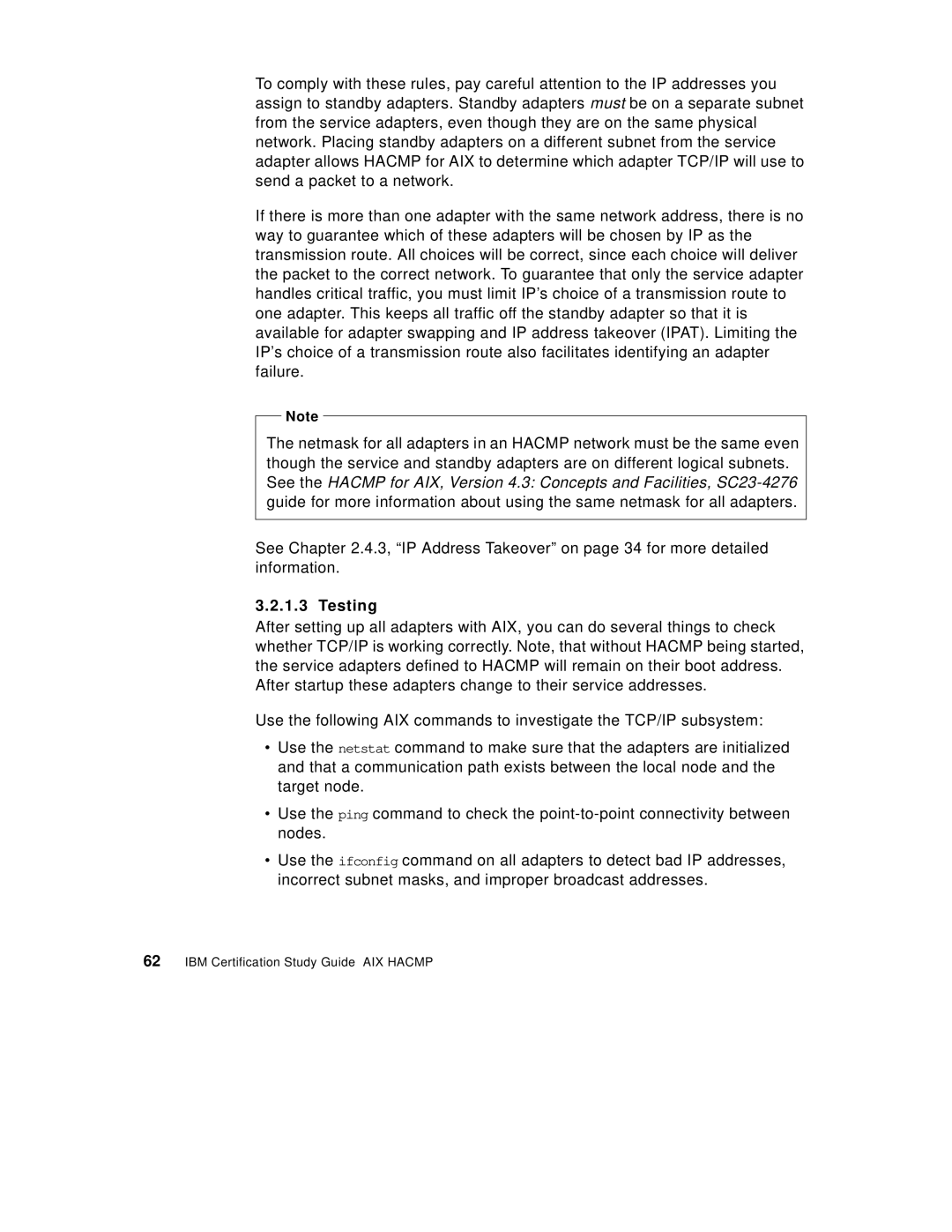
To comply with these rules, pay careful attention to the IP addresses you assign to standby adapters. Standby adapters must be on a separate subnet from the service adapters, even though they are on the same physical network. Placing standby adapters on a different subnet from the service adapter allows HACMP for AIX to determine which adapter TCP/IP will use to send a packet to a network.
If there is more than one adapter with the same network address, there is no way to guarantee which of these adapters will be chosen by IP as the transmission route. All choices will be correct, since each choice will deliver the packet to the correct network. To guarantee that only the service adapter handles critical traffic, you must limit IP’s choice of a transmission route to one adapter. This keeps all traffic off the standby adapter so that it is available for adapter swapping and IP address takeover (IPAT). Limiting the IP’s choice of a transmission route also facilitates identifying an adapter failure.
Note
The netmask for all adapters in an HACMP network must be the same even though the service and standby adapters are on different logical subnets. See the HACMP for AIX, Version 4.3: Concepts and Facilities,
See Chapter 2.4.3, “IP Address Takeover” on page 34 for more detailed information.
3.2.1.3 Testing
After setting up all adapters with AIX, you can do several things to check whether TCP/IP is working correctly. Note, that without HACMP being started, the service adapters defined to HACMP will remain on their boot address. After startup these adapters change to their service addresses.
Use the following AIX commands to investigate the TCP/IP subsystem:
•Use the netstat command to make sure that the adapters are initialized and that a communication path exists between the local node and the target node.
•Use the ping command to check the
•Use the ifconfig command on all adapters to detect bad IP addresses, incorrect subnet masks, and improper broadcast addresses.
